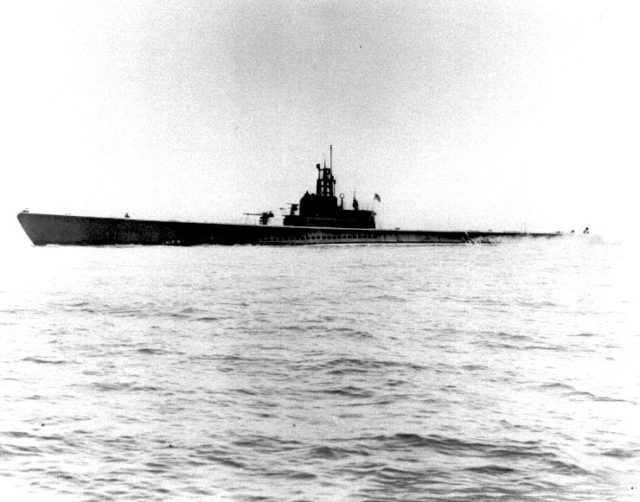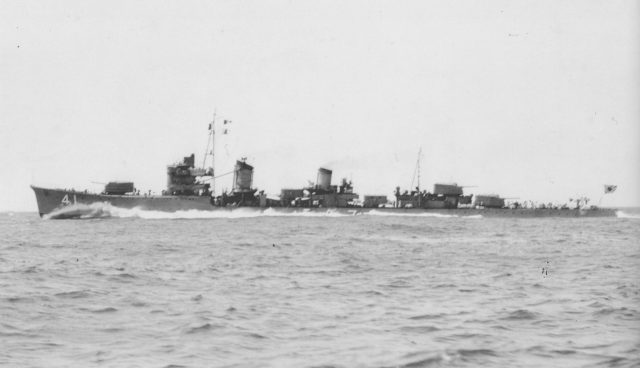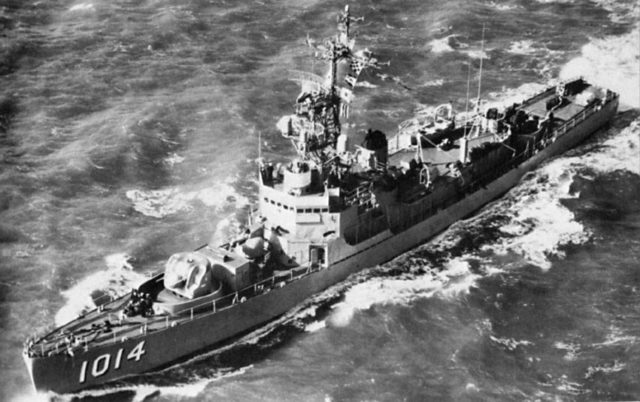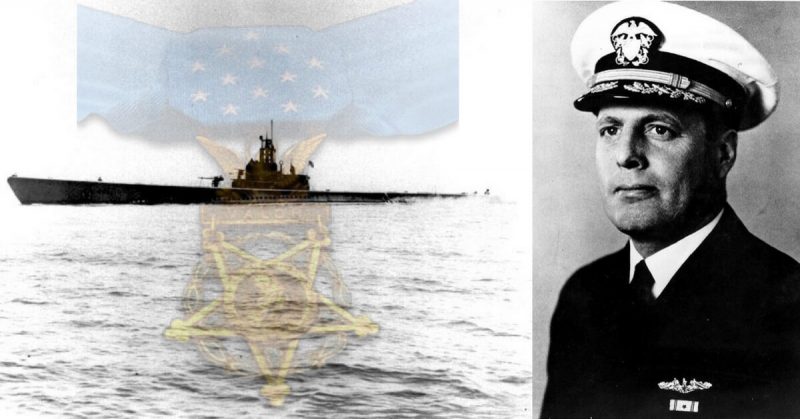The history of war is full of various mantras that, while popular, are not always entirely accurate. It is often said that the Marines never leave a man behind, but the truth is that the nature of warfare means not every Marine makes it back to friendly lines right away. As such, it has often been said that any good Captain goes down with his ship while the truth of the matter is that many gallant Captains have made their way into the sea and survived.
But for one particular Captain aboard the submarine USS Sculpin, fulfilling this mantra would indeed be his final act of sacrifice for his country. When the USS Sculpin was engaged in an outmatched surface conflict with a Japanese ship, it became clear that the only way to save his men was to scuttle the ship and take their chances as P.O.Ws. However, for Captain Cromwell, that was simply a risk he was unwilling to take himself. Knowing that he had detailed knowledge of America’s top secret codebreaking technology and the upcoming invasion of Tarawa, Cromwell feared torture and drugs would force him to reveal this sensitive information.
Rather than let the Japanese get a hold of the information known only to him, Captain Cromwell opted to ride this sub down to the bottom preventing his capture. For his selfless actions that day, Captain Cromwell was awarded the Medal of Honor and a hallowed place in US Naval History.
Born for the Sea
James P. Cromwell was born on September 11th, 1901. By 1920 he had been appointed to the U.S. Naval Academy and received his commission in 1924. After a brief stint serving on the battleship USS Maryland, he was assigned to the USS S-24 in 1927. Here he would hone his training in diesel engineering and was set up for what would be a long career in the submarine service.
By 1942, he found himself in command of multiple Submarine Divisions, eventually setting up shop and flying his pennant in the USS Sculpin. It would be here on this ship that he would earn his hallowed place in history.

While command of the actual submarine fell to Lieutenant Commander Fred Connaway, Captain Cromwell was aboard to make his way to the Pacific and command a mid-Pacific submarine wolf pack. On November 5th, 1943, the USS Sculpin headed out for what would be her 9th war patrol along with Captain Cromwell on board.
Of the entire task force, Captain Cromwell was in possession of these detailed secret plans and it was alone his burden to bear. As for the rest of the crew, it was simply time to head back out into the Pacific and do their worst on any Japanese ships they encountered.
A Brutal Fight Ahead
Having arrived on station on November 16th, 1943, Sculpin and her crew were preparing to execute orders to support the upcoming invasion when they came up a large Japanese convoy on the evening of the 18th. Sensing a prime opportunity to attack and inflict heavy damage on the Japanese, the Sculpin sped forward to get ahead of the convoy for a dawn attack.
As the Sculpin’s Commander, LCDR Connaway began his final approach the Sculpin’s periscope was observed by the enemy. Taking evasive action, the Sculpin dove deep and allowed the convoy to pass overhead in hopes of coming up behind it for a later attack. Unfortunately for the USS Sculpin, the Japanese were prepared for such a maneuver.

The Japanese destroyer Yamagumo had remained behind to prevent a rear attack and quickly identified the Sculpin once it surfaced. Facing a pattern of depth charges, the Sculpin was forced to dive deep again and wait for several hours to return. Unfortunately for the crew, they were unaware that the depth charge attack had damaged the depth gauge on the sub. When Sculpin tried to reach periscope depth a few hours later, the entire boat breached the surface in full view of the Yamagumo and a greater fight was about to begin.
Attempting to flee the fight one more time, the Sculpin dove deep, but the relentless string of depth charges took its toll on the submarine causing it to lose all depth control. As leaks began to spring up around the ship, LCDR Connaway was forced to return to the surface and fight it out. With the Sculpin being no match for the Yamagumo on the surface, the fighting was quick and brutal.
A direct hit on the Sculpin’s conning tower killed the entire bridge team, including LCDR Connaway. The order was given to abandon ship, and this left the senior Captain Cromwell who was just along for the ride with a fateful choice that would go down in Naval History.
Capture is Not an Option
Captain Cromwell’s position placed him with detailed knowledge of the American code-breaking efforts along with detailed battle plans for the upcoming invasion or Tarawa. Were he to be captured he would risk exposing secrets that could cost thousands of lives under the influence of torture and drugs.
As the rest of the crew jumped into the sea for what was certain to be immediate capture, Captain Cromwell took command of what remained of the ship and voluntarily joined her final plunge to the depths ensuring all secrets stayed with him.
Over 40 crew members were pulled from the sea and in fact spent ten days being interrogated by Japanese intelligence officers on Truk leading one only to image what they could have extracted from Captain Cromwell. They were then divided in half and sent to Japan to spend the rest of the war as POWs.
However, in a cruel turn of fate, the Japanese ship carrying half of the Sculpin’s crew members was sunk by fellow American submarine USS Sailfish using intelligence gathered from the very top secret program Cromwell died to protect.

When the other half of surviving POWs returned to America after the war, the tale of Captain Cromwell’s sacrifice was recounted, and he was posthumously awarded the Medal of Honor. Some men can muse that a Captain goes down with his ship, but for Captain James P. Cromwell it was nothing more than incontrovertible fact.
However, Cromwell’s legacy would have the opportunity to rise and take to the sea once more as the destroyer escort USS Cromwell was named and commission in his honor some 20 years after he made his final descent into the sea.
